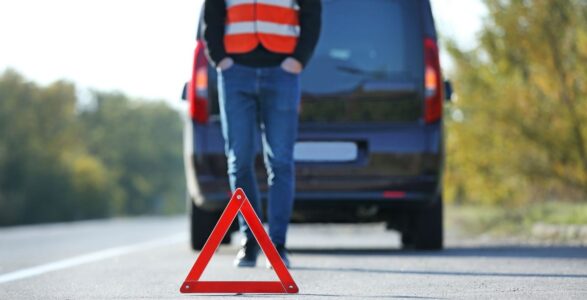A Guide to Dash Cams

Published 27 September 2019
What is a dash cam?
A dash cam is an in-car video recorder that is mounted on the windscreen and continuously records the view ahead as you drive. Rear facing dash cams are also available. It is powered either by the cigarette lighter cable or can be hardwired into the fuse box. The dash cam starts recording automatically when the ignition key is turned. Dash cam footage is recorded onto a micro SD card. When this card is full the camera will automatically loop and record over the oldest file. Footage can be transferred onto a computer, phone or tablet & stored permanently.
Common dash cam features
HD Video / 4k Video
All cameras record footage of the road ahead, but higher quality video like HD or 4K will provide greater detail which enable capture of number plates and other details.
Loop Recording
Dash cams record on a loop, video is captured in short segments and saved onto SD card. When the card is full the latest file is overwritten. Footage recorded of an accident is permanently locked so doesn’t get overwritten.
GPS
GPS enables the dash cam to measure your precise location and speed of travel. When combined with the video captured, this information can paint a more complete picture of the events leading up to any incident.
G-sensor
G-sensors, measure the movement of your vehicle through 3 axis. Dash cams are therefore able to detect significant movement such as in the event of a crash, and minor incidents such as hitting a pothole, swerving or going over speed bumps Most cameras allow you to change the sensitivity of what recordings are ‘locked’
Emergency Recording
While many car cameras use their internal G-sensors to detect incidents in which your vehicle is involved, you may also wish to record activity which this mechanism doesn’t detect but that you may like to keep a record of. This could include road traffic accidents that occur on the road ahead of you or examples of road rage. On these occasions, some dash cams offer emergency recording which will lock the current video file and keep it safe from overwriting. This is usually activated by a simple button that it within easy reach of the driver for ease of use.
Parking Mode
While your car is parked the dash cam will automatically record if your car gets bumped or knocked. This feature will be helpful to capture details of anyone who may hit your vehicle and leave the scene. Most dash cams with this function will engage parking mode when it detects the ignition has been turned off or that the vehicle has been stationary for a predetermined period of time.
Wide Angle Lenses
Wide angle lenses capture a wider view than a standard lens, offering the potential to capture more valuable footage. These lenses not only record directly in front of your vehicle but to the sides as well.
Multi or Dual Lenses
Multi, or dual-lens cameras, feature a rear-facing camera as well as a forward-facing one. The rear camera records the interior and may also capture some footage outside of the rear window. Some dash cams offer the ability to mount the second lens separate to the main forward facing lens, often facing out of the rear window to capture activity on the road behind.
Speed/Date Stamp
Most cameras allow the video files to be stamped with the date and time that they were recorded and this information is usually displayed in the corner of the video when it is played back. This basic, but crucial, piece of information can help to validate your video evidence if it is called upon. While the process of setting the time and date is different for each model of camera, for this reason it’s important that you set this correctly.
Night Mode
Some cameras feature LEDs which activate to illuminate the surroundings with infra-red (IR) light in low light conditions.
Does a dash cam reduce your insurance costs?
Most leading insurance companies now offer a reduction in your insurance premiums if you use a dash cam. Between 15% and 30% discount is possible. However you can’t use any dash cam – the insurer will specify makes and models to be eligible. This ensures that you are using higher quality models recording detailed footage that could prove helpful in the event of a claim or dispute.
It’s important to remember that if you make a claim or need to defend a claim against you and you don’t have dashcam footage to support it, you may have to repay any discounts that you may have had. It could also invalidate your policy.
What to do if you capture an incident or dangerous driving?
In July 2018 the National Dash Cam Safety Portal was established by Nextbase and the Constabularies of England and Wales. Owners of any dash cam can easily submit footage to the relevant local Police force. It’s simple to use just click the County where the incident occured and you’ll be directed to a dedicated report page for that region.

Why buy a dash cam?
Dash Cams bring many benefits to its users and include:
- Reduce your insurance premiums and protect your No Claims Discount
- Protection whilst parked with Parking Mode
- Tackle Crime and Bad Motorists
- Resolve disputes from incidents quicker
- Encourages better driving
Compass Vehicle Services Ltd offer: nationwide car leasing – bad credit car finance – used car deals – personal leasing – business car leasing – best car lease deals – non-status car leasing
Back to all help and advice articles



